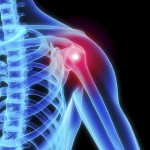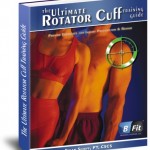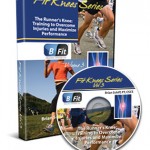Brian Schiff’s Blog
Injury Prevention, Sports Rehab & Performance Training Expert
Many of my clients need to improve shoulder and pillar stability. Combating poor glenohumeral and scapular stability and insufficient trunk stability is a must to reduce injury risk, resolve shoulder and back pain and eliminate compensatory motion with exercise, sport and life.
The following two exercises are “go to” ones I utilize to do just this.
The links above are for two recent exercise columns I authored for PFP Magazine. These exercises include load bearing using the client’s bodyweight and include progressions and regressions.
It is time to clear out some product inventory this year. To that end, I am offering a 50% off sale for one week only. This sale is on all physical products as well as e-books. I am also offering this discount on my printed version of the Ultimate Rotator Cuff Training Guide, of which I only have five remaining copies.
Simply enter code BFIT50 at checkout to save 50% on your entire order. Click Here to view all products.
This sale will end Monday July 18, so act now while supplies last.
This is a follow-up from my previous post. Limited thoracic spine rotation can be detrimental for the shoulders, low back and lower extremities with sports and strength and conditioning activity. Consider the impact of asymmetry or stiffness on a golfer, swimmer, thrower, tennis player or even someone doing rotational and pressing working the gym.
Asymmetrical and repetitive activity can lead to deficits as can faulty positions during work and daily life. This simple exercise with the foam roller can be helpful in facilitating optimal mobility and better kinetic chain motion. This video comes from my ‘Functionally Fit’ column for PFP Magazine.
I work with many weekend warriors, strength training enthusiasts and overhead athletes in my practice. One of the more common dysfunctions I see in this population is either asymmetrical or general thoracic spine hypomobility (decreased range of motion).
This can predispose you to shoulder, back and hip dysfunction, as well as increase the risk for overuse injuries. In addition, it may also alter the natural biomechanics of movement, thereby negatively impacting performance. With all the sitting and screen time we engage in, it is no surprise we are developing a generation of people with forward heads, rounded shoulders and kyphotic posture.
This leads to reduced thoracic spine extension. Additionally, I often encounter decreased thoracic spine rotation. If this becomes restricted, asymmetrical overhead athletes may face increased stress on the lumbar spine, hips and glenohumeral joint. Common dysfunctions I treat related to this is rotator cuff tendinopathy, labral pathology, mechanical back pain, and hip pain to name a few.
To combat stiffness and promote more optimal mobility, I encourage my clients to perform daily mobility work. I have included a video I filmed for PFP Magazine in my column ‘Functionally Fit’ below that illustrates an effective way to combat reduced T-spine extension.
Be sure to check back for my next blog post on how to increase thoracic spine rotation.
There are several things that contribute to shoulder impingement and rotator cuff pain. Perhaps one of the biggest issues that impacts overhead athletes, Crossfit enthusiasts and the avid weight lifter is limited shoulder mobility. Poor flexibility in the pecs, lats, posterior shoulder as well as limited thoracic spine extension and rotation all contribute to suboptimal movement.
Poor mobility can place the scapula in biomechanically flawed positions, increase glenohumeral internal rotation and restrict shoulder movement at end range creating compensatory movement and pain. The video below is a snippet from my upcoming webinar on rotator cuff dysfunction and nonoperative treatment.
This webinar will be great for strength coaches, exercise enthusiasts, Crossfit athletes/coaches, athletic trainers and physical therapists. If you want to attend the webinar or catch the on-demand version, simply visit www.alliedhealthed.com. In addition, you may find my DVD on rotator cuff training very helpful in overcoming shoulder pain and staying pain free in the gym.
Click here to see a brief video overview of the DVD or visit my site at www.BrianSchiff.com for more info. Use the code Holiday15 at checkout from today until December 25 to save $10 off the retail price.
Have a great Thanksgiving and enjoy your time with family and friends!





